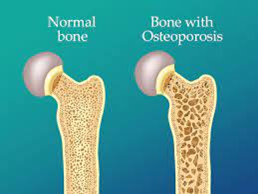A nurse is caring for a client who is receiving meperidine. Which of the following is the nurse's priority assessment before administering the medication?
Urinary retention
Vomiting
Respiratory rate
Level of consciousness
The Correct Answer is C
A. Urinary retention: While urinary retention can be a side effect of meperidine and other opioids, it is not the priority assessment before administering the medication. Urinary retention is a concern but is not immediately life-threatening compared to other potential side effects of opioids, such as respiratory depression. Assessing urinary retention is important, but it is not the primary concern in this situation.
B. Vomiting: Vomiting can also be a side effect of opioids, including meperidine. While it is essential to assess for vomiting and its potential impact on the client's overall condition, it is not the priority assessment before administering the medication. Vomiting can be managed, and the nurse should address it as needed. However, the priority assessment is one that can affect the client's immediate safety and well-being, such as respiratory rate and potential respiratory depression.
C. Respiratory rate: This is the correct answer. The priority assessment before administering meperidine is the client's respiratory rate. Opioids can cause respiratory depression, leading to reduced breathing and inadequate ventilation. Monitoring the respiratory rate allows the nurse to detect any signs of respiratory distress or inadequate breathing, enabling them to intervene promptly to prevent serious complications.
D. Level of consciousness: While assessing the client's level of consciousness is essential for overall assessment and monitoring, it is not the priority assessment before administering meperidine. Respiratory depression due to opioid use can occur even when the client is conscious. However, if respiratory depression occurs, it can lead to a decrease in consciousness and potentially unconsciousness, making the assessment of respiratory rate more critical to prevent such complications.

Nursing Test Bank
Naxlex Comprehensive Predictor Exams
Related Questions
Correct Answer is ["B","E"]
Explanation
The nurse should monitor the following laboratory tests to determine the effectiveness of epoetin alfa:
B. Hemoglobin: Epoetin alfa is a medication used to treat anemia by stimulating red blood cell production. Monitoring hemoglobin levels can help assess if the medication is effectively increasing red blood cell production and improving anemia.
E. Iron: Iron is essential for red blood cell production. Monitoring iron levels can help determine if the client has adequate iron stores to support the increased production of red blood cells stimulated by epoetin alfa.
The other options listed, A. Thyroid-stimulating hormone, C. Blood glucose, and D. Alanine aminotransferase, are not directly related to the effectiveness of epoetin alfa in treating anemia. Thyroid-stimulating hormone is related to thyroid function, blood glucose is related to blood sugar control, and alanine aminotransferase is related to liver function. While these tests may be important for monitoring the overall health of the client, they are not specific indicators of the effectiveness of epoetin alfa.
Correct Answer is A
Explanation
When a medication error occurs, the nurse should report the incident to the nurse manager or appropriate supervisor. It is essential to follow the facility's policies and procedures for reporting and managing medication errors. Prompt reporting allows for appropriate investigation, documentation, and implementation of necessary measures to prevent future errors.
Documenting that the pharmacy sent the incorrect medication (B) is not appropriate in this situation, as it does not address the nurse's role and responsibility in the error. Reporting the incident is the primary action required.
Contacting the provider to change the client's prescription (C) is not necessary in this case, as the error was related to the medication selection during administration, not an issue with the prescription itself.
Placing the unwrapped celecoxib back into the AMDS (D) is not appropriate. Once a medication has been removed from its packaging or container, it should not be returned to the dispensing system. Additionally, since it was the wrong medication for the client, it should not be administered.
Therefore, the nurse should primarily report the incident to the nurse manager or appropriate supervisor to ensure appropriate handling of the medication error.
Whether you are a student looking to ace your exams or a practicing nurse seeking to enhance your expertise , our nursing education contents will empower you with the confidence and competence to make a difference in the lives of patients and become a respected leader in the healthcare field.
Visit Naxlex, invest in your future and unlock endless possibilities with our unparalleled nursing education contents today
Report Wrong Answer on the Current Question
Do you disagree with the answer? If yes, what is your expected answer? Explain.
Kindly be descriptive with the issue you are facing.
